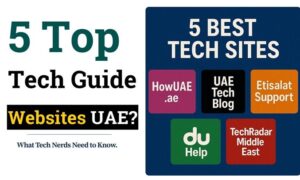The sheer volume and variety of online data are massive nowadays, making it an endless supply of valuable insights for organizations, researchers, and consumers. However, you must gather particular details before accessing the most helpful data items. Data liberation, often known as web scraping, has evolved into a sophisticated approach for accessing and retrieving helpful information from various internet sources.
This blog discusses data liberation tools, including their functions, benefits, problems, and more. Here is everything you need to know about data liberation. Let’s go!
What exactly is data liberation?
Data liberation, also known as web scraping or data extraction, is the process of gathering data from a website and transferring it to an Excel spreadsheet or another local file on your computer. It is one of the most successful ways to gather data from websites and, in some cases, utilize that data on another website.
Data liberation comprises extracting comprehensive data from online sites using automated programs or scripts, such as text, images, tables, links, and other structured data. Data liberation allows users to collect information from multiple websites simultaneously, minimizing the time and labour required for traditional data collection.
Web scraping software (sometimes known as “bots”) is designed to crawl websites, scrape relevant pages, and extract valuable data. This software can handle massive amounts of data by automating and optimizing the process.
6 Simple Steps to data Liberation
The data scraping process encompasses the following stages:
Step 1: Choosing the target website
Research the website or online resource that contains the information you seek.
Step 2: Picking data to extract
Define the precise data items you want to collect from the chosen website, such as product details, user reviews, pricing information, or other relevant data.
Step 3: Develop scraping code
Create scripts or programs to traverse web pages to identify and extract necessary data. It requires working with coding languages such as Python or Java and specialized scraping tools. These scripts may interact with APIs or use HTML parsing techniques to retrieve data.
Step 4: Implementing scraping code or software
Examine the chosen website, explore its sections, and then run the scraping code or application to obtain the desired data. This stage could include dealing with various website structures, pagination, and so on.
Step 5: Data cleaning and verification
Clean and verify the collected data to ensure its quality and usefulness. During this step, eliminate duplicate or unneeded data, fix missing values, and restructure the data to comply with your desired format.
Step 6: Data storage and analysis
After cleaning and verifying the data, save it in a database or spreadsheet. On the other hand, continue to analyze the data for visualization, analysis, or integration with other systems to gain useful insights and make intelligent choices.
How does data liberation benefit you?
Strengthening decision-making
Data liberation is critical for enhancing decision-making processes. Businesses can get up-to-date, real-time information from various websites by utilizing data scraping strategies, including how to scrape Amazon. The abundance of information enables businesses to make well-informed decisions about their operations, investments, product offers, and services. It is the cornerstone for strategic decisions about advertising campaigns, product improvements, and other matters.
Businesses may optimize their products, services, and marketing tactics by studying consumer feedback, purchase trends, and user experiences through data liberation. This consumer-centric strategy enables organizations to connect their services with consumer preferences, improving decision-making.
Economical benefits
Manual data extraction requires significant effort and resources, making it costly. Fortunately, data liberation has effectively addressed this challenge. The market’s vast range of services provides a cost-effective and budget-conscious approach. The cost-effectiveness is determined by factors such as:
- The volume of data necessary
- The efficiency of the extraction procedure
- Your particular objectives
Notably, web scraping APIs, such as Crawling APIs, are widely used for cost-effective data retrieval.
Time management
Automated data liberation dramatically minimizes the time and manual effort required to collect information from websites. It facilitates seamless retrieval and simultaneous data extraction using automated data-gathering techniques.
This capability simplifies the management of large data quantities, streamlines ongoing operations, and integrates with existing workflows, resulting in significant time savings and increased productivity.
When a scraping script or tool is created, it can be used for websites or data sources with similar structures. This method speeds up the process by removing the requirement to create a new data collection technique from scratch each time.
Heightened productivity
Accurate data liberation leads to increased productivity in the sales and marketing departments. The marketing team has access to relevant data acquired by web scraping, allowing them to develop a thorough grasp of product functionality. This insight enables the marketing team to develop new and enhanced marketing tactics that align with consumer tastes and requests.
Using data acquired via web scraping, the marketing and sales teams can cultivate personalized strategies and gain more comprehensive insights. Furthermore, the liberated data helps to shape the implementation of marketing techniques.
The sales department can also determine which audience segments will likely generate revenues and find revenue sources. As a result, the sales staff can closely monitor sales processes to optimize them.
Gaining a competitive edge
Data liberation is a practical approach for gaining critical insights from competitors’ analysis. Data scraping allows you to obtain and arrange relevant information quickly, easing the process of acquiring competitive data.
Data scraping is useful for obtaining complete competition data, such as:
- Competitors’ website URLs
- Contact information
- Social media profiles and follower counts
- Advertising strategies and comparative pricing
After obtaining the information, it may be easily exported into .csv files. Data visualization tools allow deeper discussions and insight exchange among your company.
Best approaches for data liberation that work
Consider applying the following tactics to achieve a streamlined and effective data-harvesting process:
- Respect the conditions and rules laid out by the websites you’re scraping. Following those guidelines for ethical and legal data extraction.
- Caching techniques can save scraped data locally, avoiding repetitive scraping operations and preserving resources.
- Websites may undergo structure modifications, display errors, or implement CAPTCHAs to discourage scraping. To handle such events professionally, incorporate error-handling mechanisms.
- Adherence to legislation, ethical norms, and legal criteria is required for responsible scrapping procedures. Avoid overloading servers with too many requests.
- Consistently monitor the scraping process to ensure its proper operation. Keep an eye out for changes in website structure, file formats, or anti-scraping techniques that may affect your data extraction processes.
Limitations you might face in the data liberation process
Data scraping has several obstacles and constraints that must be carefully considered. Here are the major challenges related to data scraping and techniques for overcoming them:
Ethical and legal considerations
Navigating the ethical and legal aspects of data scraping is a complex task. Following the website conditions and legal frameworks is critical to avoid legal implications. Examining contracts and permissions is a prerequisite to ensure ethical data extraction and prevent private or confidential data gathering without legal authority.
Website structure updates
Websites are frequently updated to improve the user experience, resulting in layout, structure, and feature changes. These modifications provide difficulties for online scrapers relying on certain website codes during development. To sustain successful data extraction, scraping programs must be constantly adapted and adjusted to keep up with changing website dynamics.
Getting through CAPTCHA obstacles
CAPTCHA systems act as a barrier between web scrapers and websites by using questions that challenge automation while staying manageable for humans. To overcome CAPTCHA barriers, developers must incorporate CAPTCHA-solving technology into their scraping workflows. While these solutions help ensure smooth scraping, delays may occur due to CAPTCHA problems.
IP blocking prevention
IP blocking, a mechanism used by websites to discourage excessive requests from specific IP addresses, is frequently encountered by web scrapers. To prevent scraping, websites may restrict or completely deny access. To avoid IP banning, developers can use IP rotation strategies, which involve moving between several IP addresses to provide continuing access while lowering interruptions in scraping.
Assuring the quality and accuracy of data
Despite the abundance of data available via scraping, ensuring the trustworthiness and correctness of scraped data remains difficult. Websites may contain out-of-date or incorrect information, compromising analysis and decision-making. It is critical to use data validation, cleansing, and verification processes to improve data quality, correct errors, and enable accurate insights.
Tools to navigate data extraction challenges
Certain tools emerge to be essential in overcoming web scraping challenges. You can use these software tools to collect, organize, and preserve valuable website data. Let’s look at some popular data scraping tools and technologies that can help you with data extraction problems:
Mozenda
Mozenda is a versatile data extraction tool designed to simplify the process of collecting data from websites. Mozenda provides data visualization services in addition to data extraction, improving the analytical value of the obtained data.
Data Scraping Studio
Data Scraping Studio is a viable option for those looking for a free online scraping solution. This application, designed to extract data from websites, HTML, XML, and even PDF documents, meets a wide range of data extraction needs. Data Scraping Studio, available only for Windows users, enables efficient data extraction without complications.
Crawling API
Crawling API is a user-friendly, no-code web scraping tool, making it appropriate for those without substantial coding experience. This technology allows for data extraction and safe cloud storage of the acquired data.
Crawling API provides IP rotation to protect against IP blacklisting, ensuring continuous scraping operations. Its scheduling feature enables you to automate scraping chores, which increases convenience. Furthermore, the application has unlimited scrolling capability, ensuring thorough data extraction. The results are available in various formats, including CSV, Excel, and API.
Summing up
Data liberation improves decision-making by providing insightful knowledge and exact facts. Data scraping technologies and software will evolve quickly to provide a competitive advantage in the marketplace.
The increased need for online information by companies across the industry benefits the web scraping market, creating new jobs and growth opportunities. The legal framework governing the propriety of web scraping is constantly changing. Whether you intend to use data scraping in the workplace or stay up-to-date on the industry, it is a brilliant idea because it will become much more important in the future.



































